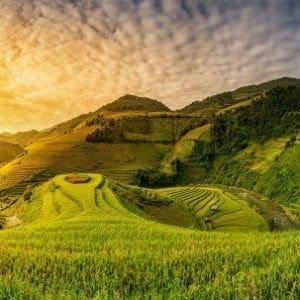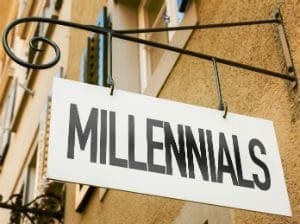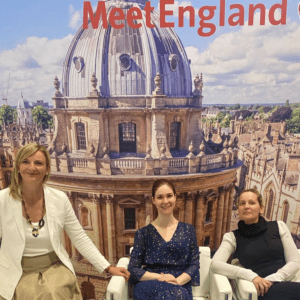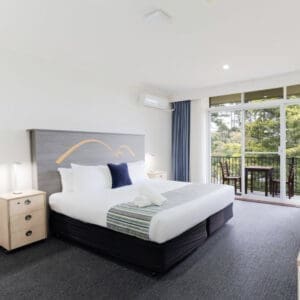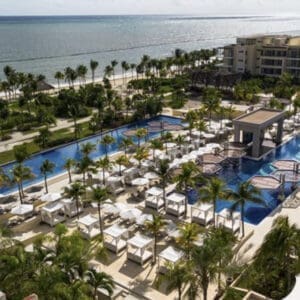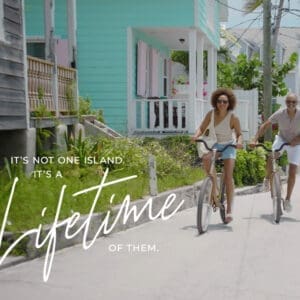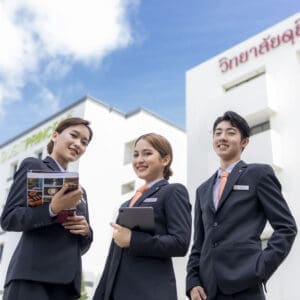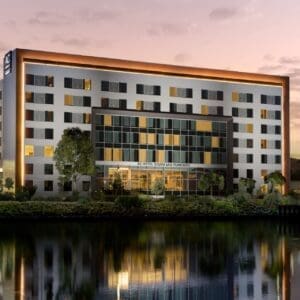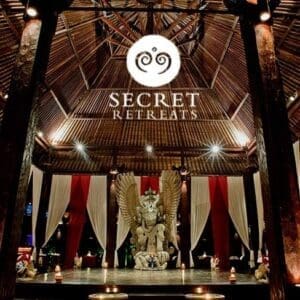A hotel building boom is set to change the face of Australia’s hotel industry, with some 120 hotel projects in the pipeline, which will grow the accommodation stock by 30% between 2016 and 2021.
This year saw Australia pass the 100,000 room mark and it is forecast that over 4000 rooms will be added in 2017, and 5000 rooms in 2018, transforming every capital city across the country with new properties ranging from 500+-room internationally branded luxury properties to intimate boutique hotels designed for millennial travellers.

To overcome the lack of land in cities and high cost of construction, hotel developers have become savvy, often converting existing buildings to hotel use. For instance, the stylish QT Hotel in Melbourne was created out of the owner’s Greater Union cinemas on Russell Street, while the art-deco Metropolitan Water and Sewerage Board building in Sydney’s Pitt Street now has a far more salubrious role as the city’s newest 5-star hotel, the Primus.
The last time Australia saw such increases in hotel accommodation was prior to the 2000 Olympics, when there was growth of 7,500 rooms between 1998 and 2000, but the room boom was followed by a dramatic bust, with faltering international and domestic economic conditions, wars and airline collapses all contributing to the downturn.
On this occasion, Australia’s peak accommodation body, Tourism Accommodation Australia (TAA) believes that a unique combination of circumstances will not only soak up the supply but enable Australia to attract a vast new audience of high-end tourists, business travellers, and conference and incentive groups.
Chair of TAA, Martin Ferguson, was Minister for Tourism in 2010, when he announced Australia’s Tourism 2020 goals. The addition of 40,000 new rooms over the decade was identified as a crucial ingredient in achieving the targets set for the industry.
“We recognised at the start of the decade that we needed to significantly revitalise and rejuvenate the tourism industry’s infrastructure and upgrading hotel stock was a key priority,” said Mr Ferguson.
“With almost double digit growth in visitor arrivals – particularly from China – we are well on the way to achieving our visitor targets, and this growth will be sustainable in the long term with such high quality new accommodation being added across the country, complemented by major infrastructure projects such as airports, convention centres and urban redevelopment.”
Mr Ferguson said the turning point for Australia was 2014, with the mining cities – Perth, Adelaide, Darwin and Brisbane – the first to see a revival interest from hotel developers, with 10,000 rooms added since then. And while the resources sector may have plateaued, international and domestic leisure tourism has largely filled the vacuum, with governments investing heavily in tourism infrastructure to ensure the momentum is maintained.
In Western Australia, the Premier has added the role of Tourism Minister, and under his watch the city centre is being transformed. Como The Treasury was created out of a former heritage government building, while a 120 room Peppers Hotel has just opened in the city centre, along with the re-launched Holiday Inn Perth City Centre, following a $25 million upgrade.
In 2017, new hotels will include an InterContinental, Doubletree by Hilton, and the first Aloft hotel in Australia. In the lead up to 2020, Westin and QT hotels are scheduled along with a Ritz Carlton in the Elizabeth Quay urban regeneration project.
Brisbane’s hotel scene hasn’t seen the current level of construction since the the city prepared to hold World Expo in 1988. Between 2016 and 2019, the city will absorb over 3000 new rooms (a 30% addition), transforming the city’s hotel landscape.
Already this year, 1000 new rooms have been added, including Ibis, Rydges, Mantra, the Art Series and Swiss Belhotel, and between 2017 – 2019, brands such as Holiday Inn Express. W, Adina, Westin, Peppers, Novotel and Emporium will add a further 2000 rooms.
Airports have become a central point for hotel development, transforming ‘one-night only’ precincts into ‘aerocity’ destinations in their own right. Sydney Airport saw a 5-star Pullman open this year, Brisbane will get new Pullman and Ibis hotels next year, the opening of the Vibe hotel at Canberra Airport was followed by the start of international air services to Canberra, and Adelaide and Perth airports have plans for new hotels.
Queensland’s coastal destinations such as Gold Coast, Sunshine Coast and Cairns are experiencing some of the highest occupancy increases in the country on the back of record-breaking international and domestic leisure business. The Gold Coast has close to 500 rooms scheduled to open in the lead up to the 2018 Commonwealth Games, including a 6-star addition to Jupiters and Wanda Dalian Group’s A$1 billion Jewel towers project. Westin announced a new resort on the Sunshine Coast, which has just been added to Australia’s international airport network.
Darwin may have suffered most of all by the resources slow down, but new hotel supply has led to the renaissance of leisure tourism to the Top End, with a proposal for a new 5-star Westin highlighting the optimism.
In Canberra, the launch of a collection of style-driven boutique hotels – such as Hotel Hotel, Realm and Little National – has underpinned the national capital’s ‘hip’ new image.
Adelaide has kept its economic future above water by retaining its submarine contract, and government money is pouring into the State to counteract its manufacturing downturn, all of which has contributed to an exciting new wave of hotels catering for upmarket travellers visiting for the city’s food, arts, events and sport, with the re-developed Adelaide Oval a major catalyst for tourism growth.
Holiday Inn Express is scheduled to open in 2017, while at the top end of the spectrum, Sheraton and Sofitel hotels are expected to launch in the following two years. Out of town, Mantra will manage the $40 million Wallaroo Shores Resort when it opens on South Australia’s Yorke Peninsula in the second half of 2017. The 100 room resort is part of a $220 development that aims to establish Wallaroo as a premium beachside destination.
Tasmania has enjoyed some of the strongest increases in leisure travel in recent years, built on what is being termed the ‘MONA effect’ – the influence of the uber-trendy Museum of Old and New Art. Such has been in its impact on tourism that owner David Walsh has proposed a new 160 room hotel cheekily dubbed HOtelMOna, which would also contain a function centre and spa.
The opening this month of Sydney’s International Convention Centre has signalled an unparalleled revolution in the city’s hotel stock, after a ‘drought’ that followed the 2000 Olympics.
Already $2.3 billion worth of hotel projects – and 3000 rooms – have been approved for the Sydney city area, with a further $1.9 billion of projects proposed and in advanced stages of planning.
A focal point for the dramatic hotel growth is Darling Harbour, where one of the largest new hotel developments in over 20 years – the Sofitel Sydney Darling Harbour – will open in the final quarter of 2017, while the $700 million Ribbon Hotel and Residences project (which will include a W Hotel) is under construction on the former IMAX site.
On the city side of Darling Harbour, Australia’s largest hotel – the Four Points by Sheraton – is adding 222 rooms to increase its inventory to 892 rooms, while also rebranding to Hyatt Regency
Hotel development has also extended to the Greater Sydney region with Parramatta and western Sydney expected to receive up to ten new hotels, including pioneering 5-star hotels, and there has been significant new hotel development in Bondi, at Sydney Airport Macquarie Park and Chatswood over the past year.
One of the most exciting aspects of Sydney’s hotel revolution has been the diversity of hotel projects, with the wave of new internationally-branded 5-star hotels complemented by a collection of personality-driven boutique hotels such as the Old Clare at Central Park, QT in Bondi, Hotel Harry in Surry Hills, and Hotel Palisade adjacent to Barangaroo. They will be joined in 2017 by a Spicers Retreats hotel, which is being created out of three terraces in Victoria Street, Potts Point.
Melbourne has been the one city in Australia to see constant growth in hotel rooms over the past decade, on the back of its highly successful events strategy, population growth and vibrant economy.
The development pipeline is continuing with over 5000 rooms under construction or planned in the five years to 2021, starting with a Four Points by Sheraton opening in March 2017, followed by W and Ritz Carlton hotels in 2018.
“There has never been a stronger vote of confidence in the Australian hotel industry than what we are seeing currently,” said TAA Chair, Martin Ferguson.
“Investment in hotel development is coming from around the world, with China one of the leading sources of finance because Australia has proven to be a safe and reliable country for both their tourists and investors.
“It has been important to get the fundamentals right to ensure the boom is sustainable. That has meant having tourism infrastructure in place such as new and upgraded airport precincts, new convention centres and stadia, along with expanded airline schedules, free trade agreements and a lower Australian dollar. All of these fundamentals are in place, and we are already seeing the benefits.
“There may be excess hotel capacity in some cities in the short-term, but this will be to the benefit of travellers through more competitive prices and greater availability, and it will allow cities to compete for large conferences, exhibitions and events through the increased accommodation capacity.
“What is so encouraging about this record-breaking phase is that the projects range from luxury international brand names to intimate boutique hotels traversing a vast range of styles and price points. It counters any arguments for additional stock by unregulated commercial short-term accommodation operators, who have exploited grey legislative areas to establish quasi hotels in CBDs and other tourist hot-spots.
“The hotel and tourism sector is leading the way in the Australian economy in delivering economic and jobs growth, and we will be looking to governments to maintain their support for the industry by promoting tourism and conferences, encouraging employment and training in the industry, and cracking down on commercial unregulated short-term accommodation.”
The Room Boom
| Summary | Projects | Net Rooms | % Increase | Years |
| Estimated rooms (Jun-16) | 102,221 | |||
| Under construction | 39 | 7,281 | 6.8% | 2015 – 2018 |
| Likely proposed | 34 | 7,771 | 7.1% | 2015-19 |
| Mooted | 61 | 16,521 | 13.6% | 2016-20 |
| Total | 134 | 31,573 | 30.9% |
Source: Tourism Accommodation Australia


